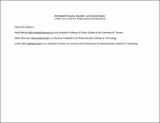Affordable Housing, Disasters, and Social Equity: LIHTC as a Tool for Preparedness and Recovery
Author(s)
Mehta, Aditi; Brennan, Mark; Steil, Justin P
DownloadAccepted version (613.9Kb)
Open Access Policy
Open Access Policy
Creative Commons Attribution-Noncommercial-Share Alike
Terms of use
Metadata
Show full item recordAbstract
Problem, research strategy, and findings: The Low-Income Housing Tax Credit (LIHTC) is the most common financing mechanism for subsidized housing production in America. We investigate how and to what extent states are currently using the LIHTC to prepare for and recover from disasters. We systematically code guidelines in the 2017 LIHTC qualified allocation plans from 53 states and territories to identify disaster-related provisions. Twenty-four states and territories include provisions for preparedness or recovery in their allocation plans, of which 13 include only preparedness provisions, 3 include only recovery provisions, and 8 include both types. Preparedness provisions address project design and siting, whereas recovery provisions direct credits to disaster-affected areas or the replacement of damaged units. Using t tests, we compare three sets of states—those without any disaster-related provisions, those with either preparedness or recovery provisions, and those with both types of provisions—across measures of housing cost, demographic composition, disaster exposure, and political ideology. States with higher homeownership rates, lower home values, and lower rents are more likely than other states to have either or both types of provisions. Future research should investigate state adoption of disaster-related LIHTC provisions to better inform affordable housing policy. Takeaway for practice: State governments could mitigate disaster-related hazards and help speed recovery by including locally relevant preparedness and recovery provisions in their LIHTC allocation plans. These provisions could encourage resilient construction, weigh the social costs and benefits of LIHTC construction in floodplains, or waive program rules to address postdisaster housing shortages.
Date issued
2020-01Department
Massachusetts Institute of Technology. Department of Urban Studies and PlanningJournal
Journal of the American Planning Association
Publisher
Informa UK Limited
Citation
Mehta, Aditi et al. "Affordable Housing, Disasters, and Social Equity: LIHTC as a Tool for Preparedness and Recovery." Journal of the American Planning Association 86, 1 (January 2020): 75-88 © 2019 American Planning Association
Version: Author's final manuscript
ISSN
0194-4363
1939-0130